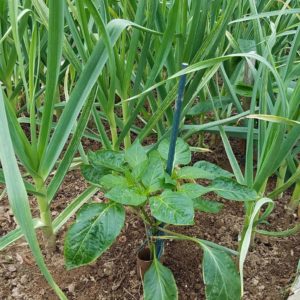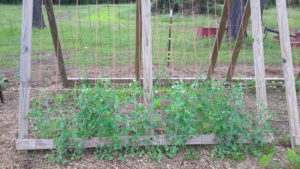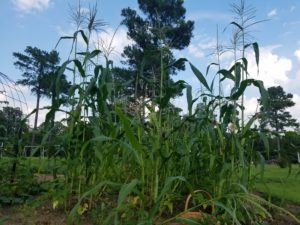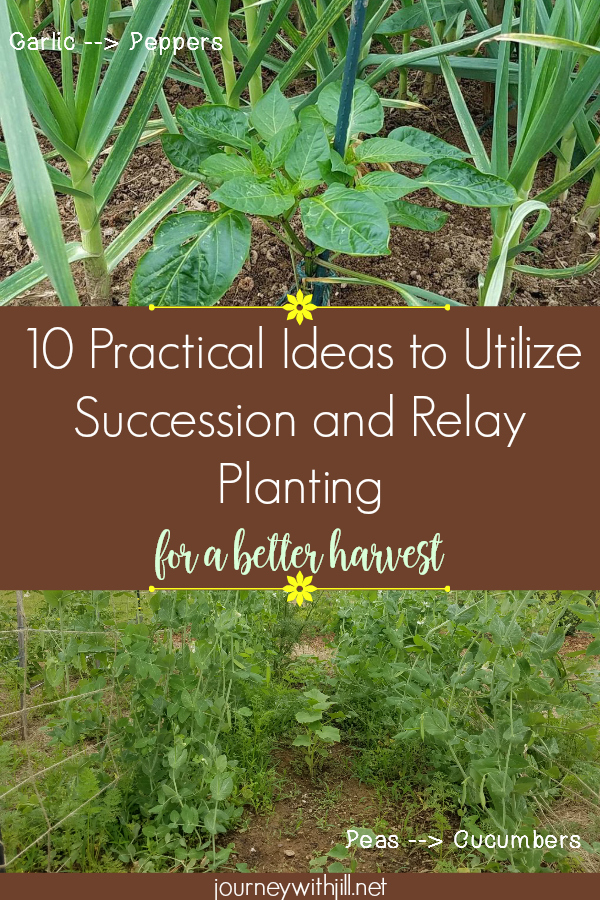10 Succession Planting Ideas to Keep Your Garden Producing All Season
I remember my first potato harvest. Chunking the dirt-covered tubers in the wheelbarrow, I thrilled at the gold I unearthed that day. But when the harvest finished, my eyes settled on the bare land. Wiping a sweat drop off my forehead, I thought, “Now what?”
I had spent months planning my crops — when to plant and where to plant — but I had never considered what I would do once a crop finished and I pulled it all up.
Some crops, of course, will take up space all season and will bear a harvest for months, but others are “one and done.” This led me to ask questions I hadn’t even considered: “What do I do with this bare land? Should I plant something else? If so, then what?”
Having the benefit of a long, 8-month long growing season from last frost to first frost, I now realize the opportunity in my garden lies beyond one crop in one space. There are a myriad of possibilities and tricks I can use to harvest multiple crops from the same space. I just had to learn how to do it.
Through trying different ideas over the years, I’ve found several ways to double and even triple the amount of harvest I can get in one space, and I want to pass on my favorites to you. Even if your growing season isn’t as long as mine, you can use the principles here to adapt to your own growing season.
In this week’s Beginner’s Garden Podcast episode, I discuss each of these options in detail, or you can read the highlights below.
Companion Planting, Relay Planting, and Succession Planting
Though often lumped together, there are three distinct methods to multiple harvests in one garden space: companion planting, relay planting, and succession planting.
Companion planting is when you plant two crops next to each other, and they grow alongside one another for most of their life cycle.
Relay planting is when you plant Crop A and then at some point in its growth, you plant Crop B. They grow alongside one another for a period, and then after Crop A harvests, Crop B can flourish in the vacated space. In long-season areas, you can even add a Crop C or even continue the cycle as long as possible. Think of runners in a relay race. For a time, both runners race together until the baton passes from one to another.
Succession planting is when you plant one crop, pull it up after harvest, and plant a new crop in that space. Think of swimmers in a relay race. The second swimmer doesn’t enter the water until the first one has reached the end of the lane.
All three methods present unique benefits, but for today’s subject I’m going to focus on five ideas you can use for relay planting and five ideas you can use for succession planting.
Five Options for Relay Planting
Garlic → Peppers/Tomatillos

My favorite way to utilize relay planting is with garlic. Garlic, typically planted in the fall, begins growing in earnest during the late winter and early spring. In my area, I harvest garlic in early June. That leaves room for summer crops to be tucked into the rows between the garlic, where they can grow alongside the garlic. Then, after the garlic comes out, the summer crops can take over the planting area. The best success I’ve found is with peppers and tomatillos.
Related Post: How to Plant Garlic — 3 Most Frequently Asked Questions
Peas → Cucumbers/Watermelon/Cantaloupe
Peas, as a spring crop that thrives in cooler weather, stop producing when the temperatures climb. In my hot-summer area, I pull out my peas in June, leaving room for summer crops to take over. Cucumbers are a particularly appealing option because they can climb on the same trellis that my peas used. I plant the cucumber seeds in the rows between my climbing peas, and once the peas are finished, I can rip them out and the cucumbers take over.
Watermelon and cantaloupe are also ideal options to follow peas because you can plant the seeds between the rows when the soil has warmed. You may or may not want to use the trellis as with cucumbers; it will depend on the type of melon and the size of the fruit.
Peas → Beans

Another option is to relay plant with peas and beans. Since both crops like the same type of soil, yet peas prefer cool weather while beans prefer hot, this makes an ideal relay combination. When I have done this, I’ve actually planted peas along my bean trellis and let them use it. Then I planted the bean seeds around the pea plants, and after the peas came out, the beans grew on their trellis as usual.
Lettuce → Okra
Lettuce (or other cool-weather greens like spinach, arugula, or broccoli) will begin to bolt in warm weather, which for us means I only enjoy these cool-weather crops through April or May. Okra and other heat-loving crops don’t begin to thrive until then, which makes them ideal plants to tuck beside the greens at the end of their life cycle. Start planting okra seeds between the lettuce plants about a month after your last spring frost, and by the time they begin to grow, the lettuce will be ready to come out.
Peppers → Spinach/Lettuce
Likewise, you can utilize relay planting as you transition your summer garden to a fall garden. Peppers will produce until your first fall frost, and when they are full-grown, they will provide shade to the soil beneath them. This shade benefits cool-loving crops like spinach and lettuce in the early part of their growth. I prefer to sow spinach seeds indoors and plant them in the garden about six weeks before my first fall frost. Because of the growth habit of peppers, you should find plenty of space to tuck these transplants (and lettuce seeds) underneath the foliage in late summer.
Five Options for Succession Planting
Potatoes → Squash/Zucchini
One of the main benefits of squash and zucchini is their quick growth in a warm, summer soil. They grow fast and harvest quickly, allowing you the flexibility of planting them at various times of the year. Many gardeners (myself included) have found planting these crops late misses the life cycle of the squash vine borer as well. In my area, I harvest my potatoes in June or July, leaving plenty of time to plant a late planting of squash in the same space.
Potatoes → Bush Beans
Bush beans enjoy a similar flexibility as squash and zucchini. If you didn’t get around to planting pole beans, or you’d like a flush of beans to can in one quick harvest, bush beans are ideal to follow potatoes. Plus, since beans contribute to the fertility of the soil, it gives more than it takes.
Corn → Bush Beans

Corn takes up a lot of space, so after the ears have harvested, you’re left with a large area of bare land. Corn also is a heavy consumer of nitrogen. Instead of leaving that soil bare (allowing for erosion and weed takeover), sow a planting of bush beans, not only to reap a harvest but also to return nitrogen to the soil.
Tomatoes → Squash/Zucchini
While indeterminate tomatoes will produce all season, determinate tomatoes like Romas produce their harvest in one big flush. To take advantage of this habit, you can pull out your determinate tomatoes once their main harvest has finished, and use that space instead for a late summer crop like squash and zucchini.
Related Post: Planting Tomatoes
Tomatoes → Broccoli/Lettuce/Beets/Carrots
Similar to following determinate tomatoes with squash, you can follow them with any of your fall crops. By using this method, you can let your tomatoes stay in the garden longer, producing a longer (though trickling) harvest before the fall crops go in.
Hopefully these ten tips to using relay and succession planting will give you a head start on making the most of your garden space this season, but don’t stop at my suggestions! There are many other ways you can utilize these two methods in your garden. Are there any combinations you would add to my list?
Do you get overwhelmed with garden planning?

Subscribe here for my best tips to plan your garden in just 7 days -- all for FREE.
Plus, I'll send you my "In the Garden E-mail" on Fridays, periodic updates on garden resources relevant to you, and you'll receive access to my entire bank of free garden downloads!
You are also agreeing to our privacy policy.


This is one of the best explanations I have found in gardening!! Thank you for all your hard work and it’s wonderful to know you are a Christian as well! God bless!!
Thank you, Dawn!
This is a good list. only missing, what to plant after broccoli?
It depends on your climate and when the broccoli is harvested. If you have time for a summer crop, options would be beans, squash, etc. I often will plant buckwheat as a cover crop until a fall crop goes in.